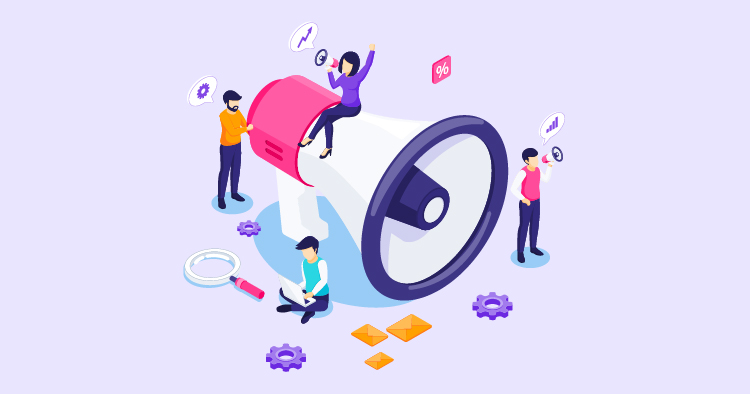Understanding the customer journey within your sales funnel is crucial for optimizing conversions and enhancing customer experiences. By mapping out each step, from initial awareness to the final purchase decision, businesses can identify critical touchpoints and opportunities for engagement. This process helps tailor marketing strategies to various customer needs and pinpoint improvement areas. This article delves into the importance of a well-defined customer journey map and how it can effectively guide your prospects through a seamless sales funnel.
Understanding the Customer Journey
When we talk about the customer journey, we’re referring to the entire experience someone has from the moment they first hear about what you’re offering to when they make a purchase—and beyond. It’s like following a roadmap of a customer’s interactions with your brand, which can include seeing an ad for the first time, clicking on your website, reading customer reviews, and finally deciding to buy your product or service.
Understanding this journey is especially important for small businesses. It’s like being a detective, piecing together clues to determine how customers find you and what’s convincing them to buy. By understanding these steps, you can fine-tune your marketing efforts, improve customer service, and create a shopping experience that keeps people coming back.
The customer journey isn’t just a single path, though. It comprises several key steps, starting with awareness—when people first understand what you’re selling. Next is a consideration, where they mull over whether or not to buy from you. Finally, there’s the decision stage, where they take out their wallets and make the purchase. At each stage, you’ll want to use different tactics to keep them moving smoothly along the road to becoming a happy customer.
Sales Funnel vs. Customer Journey
It’s easy to confuse the sales funnel with the customer journey since they both involve making a sale. But they’re not the same thing. The sales funnel focuses on the steps a customer takes right before buying, like becoming aware of a product, showing interest, making a decision, and taking action. It’s a helpful tool for understanding how to convert someone just looking into a paying customer.
On the other hand, the customer journey is broader. It includes everything in the sales funnel but also considers the customer’s experience before they enter the funnel and after they leave it. If the sales funnel is the path to buying, the customer journey is the whole hike, complete with the scenery along the way and the memories afterward.
The sales funnel and the customer journey are essential for growing your business. The sales funnel clearly shows potential customers how to move toward a purchase, while the customer journey helps you see the bigger picture. By understanding both, you can create strategies that get people to buy and turn them into loyal fans who keep returning.
Stage 1: Awareness
People learn about your brand and what you offer at this initial stage. It’s your chance to grab their attention and spark their interest. You want to make a memorable impact that makes them think of you when they need what you’re selling.
Struggling with Digital marketing? Book Your Free Strategy Session!
- 30-Minutes Session
- Expert Insights
- Data-Driven approach
- Optimized Strategies for Your Goals
To get noticed, focus on strategies such as enhancing your website for search engines, sharing engaging posts on social media, and creating content that speaks to the needs and interests of your audience. The content should be easy to digest and provide value, whether it’s through informative blog posts, eye-catching infographics, or compelling videos.
Your website and content must show up in search results. By integrating the right keywords, crafting quality content, and ensuring your website is easy to navigate, you increase the chances of potential customers stumbling upon your brand when searching online.
Stage 2: Consideration
Now, potential customers are weighing their options, including what you offer. They’re considering whether you fit their needs and how you compare to competitors. This is the time to deepen their interest and earn their trust.
Share content that helps them better understand your products or services, like informative blog posts, detailed webinars, and real-life case studies. Showing off your knowledge and the value of your offerings can build credibility and trust, making it easier for potential customers to choose you over someone else.
Offering something valuable, like a free ebook or a trial period, can be a great way to collect contact details. Then, you can keep in touch through email marketing, sending personalized content, and offering special deals to keep your brand in their minds. This gentle nudge can help them decide to buy from you.
Stage 3: Decision
Your potential customer is ready to choose at this point in the journey. They’ve learned about the options and thought them over, and now it’s time for them to decide what to buy. Your job is to help them take the leap and choose your product or service.
To do this, you’ll want to create content that’s not just informative but also persuasive. Think about the kind of information that can tip the scales in your favor—like detailed descriptions that showcase your product’s features and benefits, glowing reviews from other customers, and clear calls to action that guide them to the next step. Make sure to address any final concerns they might have. This could mean providing extra details about product warranties, return policies, or customer support.
Your website’s landing pages play a huge role here. They should be easy to navigate, with a clear, straightforward message pointing to the call to action. This could be a button or link that says “Buy Now,” “Get Started,” or “Learn More.” Keep tweaking and testing these elements to determine what works best for your audience.
Aligning Content with the Customer Journey
It’s essential to match your content to the right customer journey stage. Each stage has its own needs; your content should meet them head-on. Early on, when customers are just becoming aware of a problem or need, they might look for educational content like blog posts or infographics. As they move into the consideration stage, they’ll want more detailed information, like how-to guides or product comparisons.
Struggling with Digital marketing? Book Your Free Strategy Session!
- 30-Minutes Session
- Expert Insights
- Data-Driven approach
- Optimized Strategies for Your Goals
At each stage, think about what your customers are asking and what concerns they might have. Then, create content that answers those questions and eases those concerns. For the final decision stage, share success stories and testimonials that prove the value of your products or services.
Using Storytelling Techniques to Connect with Customers Emotionally
Stories can capture hearts and minds like facts, and figures alone cannot. When you share stories, you’re not just providing information; you’re creating an experience and an emotional connection. This could be through customer success stories that show your product in action, tales about how your company came to be, or sneak peeks into your business’s daily life.
The right story can make your brand more relatable and memorable. It can also help customers see themselves in the narrative, imagining how much better their lives could be with your product or service. So, use storytelling to add a personal touch to your content and make your customer journey more engaging and impactful.
Understanding Customer Journeys Through Data
Gathering and examining customer journey data is crucial for businesses. It sheds light on how customers interact with your brand and what they seek. Analyzing this data lets you fine-tune your marketing tactics and make your sales process more effective.
To get started, you can use a variety of tools. Google Analytics is excellent for tracking website interactions, while CRM software can help you understand individual customer behaviors. Marketing automation tools are also invaluable for monitoring conversions and customer engagement. Key metrics to watch include where your traffic is coming from, how well you convert visitors into customers, and what people say about your brand.
With this information, you can make smarter decisions backed by accurate data. It’s important to keep tweaking and improving your strategies as you learn more about your customers. By experimenting with different methods and paying close attention to what works, you can better align your offerings with what your customers want and need.
The Power of Personalization
Personalization can be a powerful tool for small businesses. Tailoring your services or products to fit each customer’s unique needs can boost satisfaction, increase sales, and build loyalty. Companies that get personalization right often see their customers more engaged and willing to buy.
To create these tailored experiences, it’s essential to use customer data smartly. Look at what your customers have bought before, how they browse your site, and what feedback they’ve given. This information can help you craft marketing campaigns that hit the mark, suggest products they’ll love, and communicate in a way that resonates with them. Tools like personalization software and CRM systems can make segmenting your audience and understanding what they’re looking for easier.
Personalization’s success is evident when businesses create unique customer profiles and adjust their services to match. For example, an online store that suggests new products based on previous purchases or a service provider that sends personalized reminders and special offers uses personalization to enhance the customer experience. These examples illustrate how tapping into customer preferences can lead to more engaging and rewarding interactions between the customer and the business.
Integrating Customer Feedback in the Journey
Customer feedback is a goldmine for understanding what customers want and how they feel about your service. It helps you pinpoint what’s working and what needs improvement. When you listen to your customers and act on their suggestions, you’re not just fixing problems but building relationships and trust.
You can gather insights in several ways. Ask for feedback through surveys or set up forms on your website. Talk to your customers directly for a more in-depth understanding. Also, keep an eye on social media to see what people are saying about your brand. Tools measuring customer satisfaction, like the Net Promoter Score, can tell you how likely people are to recommend your business.
Once you have this feedback, don’t just sit on it—act on it. Tackle customers’ issues and make changes that make their experience smoother and more enjoyable. If they love something, make it even better. By continually refining your approach based on what you hear, you’ll stay ahead of the curve and keep your customers returning.
Optimizing for Mobile and Voice Search
People increasingly use their smartphones and voice assistants to find what they need. This means your online presence has to be spot-on for these users. You’re more likely to attract and retain customers if your website and content are easy to use and find through mobile and voice searches.
For mobile users, a responsive website design is a must. It should look good on any device and load fast to keep people’s attention. Voice search optimization is slightly different; it’s all about using conversational language and answering the questions people ask their voice assistants. And don’t forget to keep your business details updated on online directories, as voice searches often use these as a source of information.
With a website that caters to all devices and a strategy that includes voice search optimization, you’ll be better positioned to meet your customers where they are—whether they’re typing on the phone or asking their smart speaker for help.
Building Customer Loyalty in the Journey
Creating a loyal customer base is about engaging with your customers and ensuring they see real value in sticking with you. Delivering exceptional customer service and considering setting up a loyalty program is essential. Regular, meaningful communication keeps the relationship alive and lets customers know you value them.
Trust and mutual benefit are the foundations of lasting customer relationships. Make sure you personalize your interactions and quickly address any questions or concerns. Going the extra mile shows customers you care about their needs. Analyzing customer data helps you get to know your customers better and offers them services that hit the mark.
Happy customers are your best advocates. Please encourage them to spread the word about their positive experiences and think about offering referral rewards. Sharing customer success stories can boost your brand and bring in new business.
Leveraging Social Media on the Customer Journey
Social media is a powerful way to connect with customers throughout their journey with your brand. It’s great for getting the word out, building relationships, and keeping those connections strong. Social media lets you have real-time conversations with customers, help them when they need it, and share content they’ll find valuable.
To grab your audience’s attention on social media, you need to know what they like. Mix it up with educational, fun, and promotional posts. Join in on conversations, reply to comments, and use eye-catching visuals like videos and infographics.
Make social media a crucial part of your sales strategy. Targeted ads can help you reach new customers. Share stories of satisfied customers and point your followers to your website or special offers. Monitor the success of your social media efforts to see how they’re helping your sales.
Measuring Success in the Customer Journey
Understanding how well your customer journey works can be done by monitoring several significant numbers. Think about how many people are buying your products, how many keep returning, and how happy they are with your offer. These numbers tell you if people are smoothly moving through the steps from learning about your product to buying it and if there’s anything you need to work on.
It’s critical to set goals that make sense for your business. Look at what others in your field are doing, what you’ve achieved before, and what you can realistically reach. Keep checking on these goals to ensure they still fit with how your business is growing and what your customers expect.
To improve your sales process, you should always examine customer behavior and try new ways to make their experience smoother. Be flexible and ready to tweak things based on the information you gather.
Final Thoughts
The customer journey is a vital component of any successful sales strategy. By meticulously mapping this journey, businesses gain invaluable insights into consumer behavior, preferences, and pain points. This understanding enables the creation of a more personalized and efficient sales funnel that resonates with the target audience, ultimately leading to increased customer satisfaction and loyalty. Remember, a customer-centric approach is critical to unlocking the full potential of your sales funnel and achieving long-term business growth.



